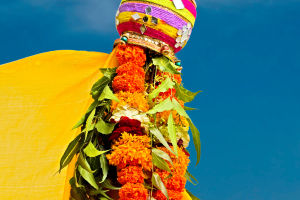February 14 is a day that people either eagerly anticipate or dread in the weeks leading up to it.
For those not in a relationship, it's emphasis on romantic love can be downright frustrating, and even those happily coupled may feel the weight of high expectations.
Despite this, Valentine’s Day has become one of the most commercialized and symbol-laden holidays of the year. Today, greeting card companies lead the charge in decorating for the holiday, but the origins of Valentine’s Day date back centuries, if not millennia. In this article, we’ll dive into some of the most iconic symbols associated with the day and trace the long, winding history behind this celebration of love.
Valentine’s Day: The Origin of a Symbolic Tradition
The term Valentine is used in several ways: you can be someone's valentine (the object of their affection), or you can send a valentine (a card). Both meanings are directly tied to the holiday itself. Before Valentine’s Day became a celebration of love, it was originally the feast day of St. Valentine.
In the 18th and 19th centuries, sending Valentine’s Day cards became a common courtship custom in England and France. This tradition waned toward the end of the 19th century, but it made a comeback in the 1920s. It’s worth noting that Hallmark, which began in 1910, started selling Valentine’s cards in 1913. Since then, exchanging valentines has become an annual tradition.
Love Birds
Birds, while not the most ubiquitous symbol of Valentine’s Day, have been associated with the holiday for centuries. Geoffrey Chaucer, in his early reference to the day, linked February 14 with the time of year when birds emerge from winter hiding to sing love songs to one another.
Birds have long symbolized romantic love, perhaps due to their courtship rituals or their return in spring, a season traditionally connected with renewal and affection. This may explain why February 14, in the midst of winter, became associated with romantic love as birds herald the coming of spring.
Hearts: A Symbol of Love
The concept of the heart goes back thousands of years, tracing it's origins to Proto-Indo-European roots. It’s no wonder that the heart has become synonymous with romantic love. But how exactly this connection formed is a bit of a mystery. The link between the human heart and love is perhaps the easiest to understand. Poets from ancient Greece onward wrote about the physical sensation of a racing heart when in love.
As for the heart shape, it's origin is more elusive. Some point to the Greek philosopher Aristotle, who described the heart as a symmetrical at the center of the body. Others suggest that the heart shape might not even come from the human heart, but rather from the human buttocks or genitalia, thus linking it to love and desire. Another theory posits that the heart shape was inspired by the seeds of silphium, a plant used as a contraceptive in ancient times.
Romance: The Heart of Valentine's Day
Valentine’s Day centers on romantic love, setting it apart from other types of love, like familial or platonic. While love and romance often overlap, they are not the same. The word romance didn’t even enter the English language until the 14th century, and when it did, it didn’t refer to love at all. Instead, it was used to describe a specific genre of stories about knights and adventure. It may seem odd at first, but the evolution of the word makes more sense when you trace it's roots.
Cupid: The Mischievous Symbol of Love
If Valentine’s Day had a mascot, it would be the winged, bow-and-arrow-wielding cherub known as Cupid. Along with the heart, Cupid is one of the most recognizable symbols of the holiday. But his journey from a powerful Greek to the playful baby we know today is not as straightforward as it might seem.
Roses: The Flower of Love
In Greek mythology, Aphrodite, the goddess of love, was also credited with creating the rose. There are several versions of the myth surrounding the rose's origin. One tells that a thorn from a white flower scratched Aphrodite, and her blood turned the petals red. Another story claims that when her lover, Adonis, died, Aphrodite wept, and from her tears, the first rose bloomed. Regardless of the exact origin, roses have long been regarded as the ultimate symbol of love and beauty across cultures.


